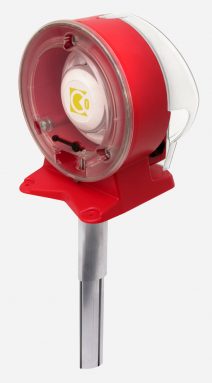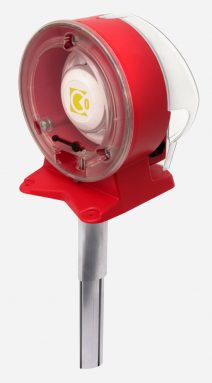Smoke detection for ventilation
The purpose of smoke detection in ventilation ducts is to discover smoke in ventilation systems at an early stage, and when detected to send an alarm to the control unit and substations. These can then quickly implement countermeasures such as closing dampers and initiating forced ventilation in order to limit the spread of smoke.
How does single-tube smoke detection work in ducts?
The system is based on an air probe (a so-called venturi tube) 1 and a smoke detector housing with integrated control unit 2 (Uniguard smoke detector is also available with an external control unit). The venturi tube conducts the air from the duct to the detector housing, which is fitted to the outside of the duct, where a smoke detector detects potential fire particles in the air. In the event of an alarm, the smoke detector sends a signal to the control unit, which by means of relays then closes dampers, stops/starts fans and forwards the alarm, e.g. to the substation. The aerodynamic design of the housing and the pipe are crucially important for the ability to detect small levels of smoke particles in the air at an early stage.
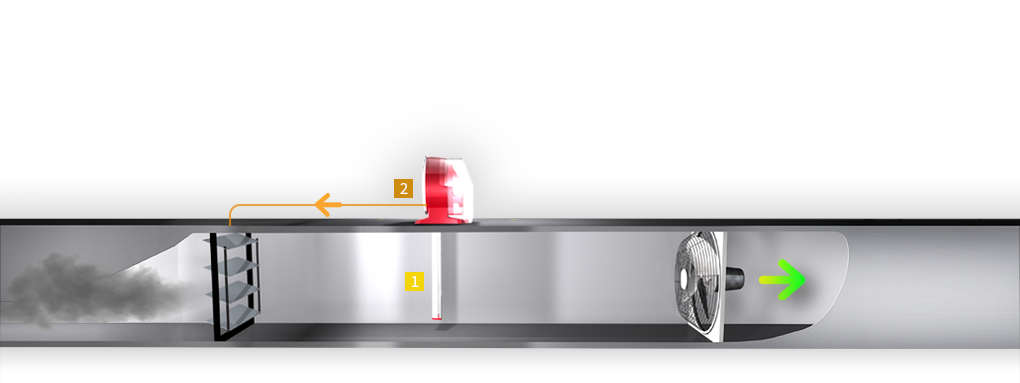
Why choose Calectro's smoke detectors?
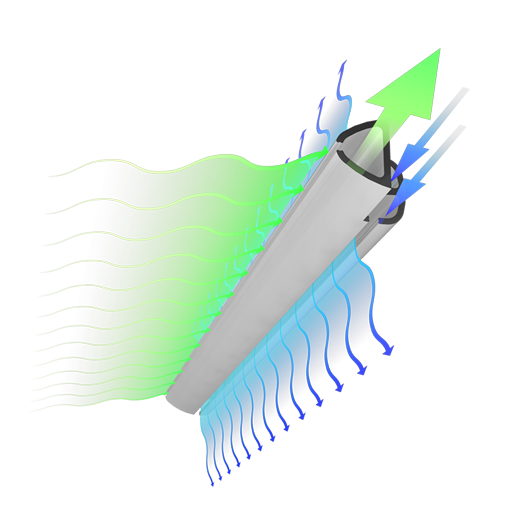
Advanced venturi tube technology
Uniguard’s patented venturi tube is fitted with aerodynamic flanges that are the most effective way of drawing air from the depths of the entire ventilation duct and delivering it to the smoke detector. This facilitates the discovery of flue gases even in small doses and at low air speeds. The effect of the venturi tube has been measured and doumented by external laboratories.
Flow-optimised housing
Uniguard’s patented housing range (UG-3/4/5) has been specially designed using simulation software in order to achieve a maximum concentration of flue gases around the smoke detector. Together with the venturi tube, the housings create an unsurpassed detection performance, even with low air volumes. They also have an indicator so that the air flow can be easily inspected.
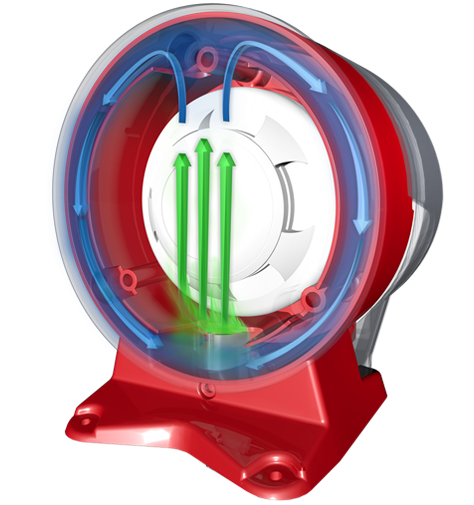
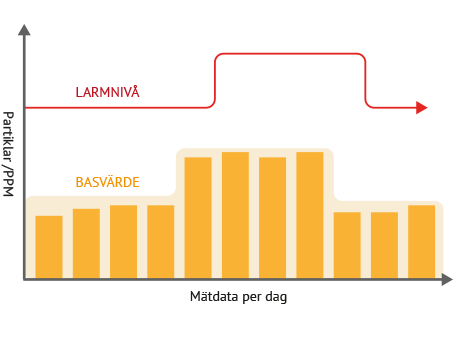
Automatic sensitivity adjustment
Uniguard’s smoke detectors have an inbuilt, automatic sensitivity adjustment that measures the base value in the air flow every day and compensates for any possible variations in the system over time. This minimises the risk of undesired alarms and unnecessary maintenance.
Clear alarm indicator
Uniguard version UG-3 has both an alarm indicator on the smoke detector and LEDs on the reverse side, to make it easier to check the alarm status in confined spaces.
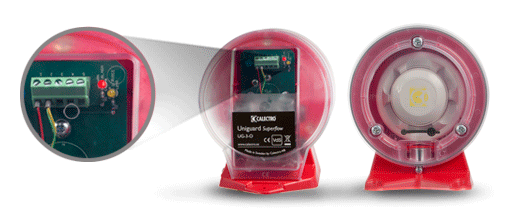
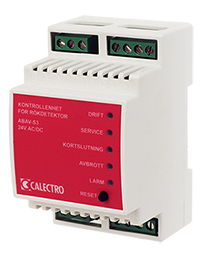
Alarm delay
If required, the ABAV-S3 control unit can be configured with an alarm delay in order to prevent undesired alarms, e.g. in connection with flue ducts. Please note that this function may only be activated in consultation with the person who is responsible for fire safety at the property.
Everything you need to know about duct smoke detection in a handbook
As with most things, knowledge is the be-all and end-all when it comes to getting the most out of a system. Our handbook entitled “Smoke Detection” contains more information about tips and troubleshooting in connection with smoke detection in ventilation ducts. The handbook can be downloaded free of charge via this link!

Se the video about UG-3 Duct smoke detector
The film shows an animation of the application and function of our duct smoke detector for ventilation system, Uniguard Superflow UG-3.
